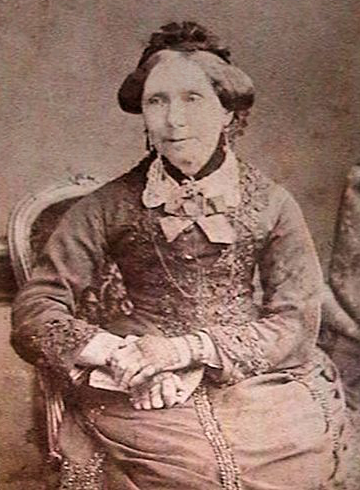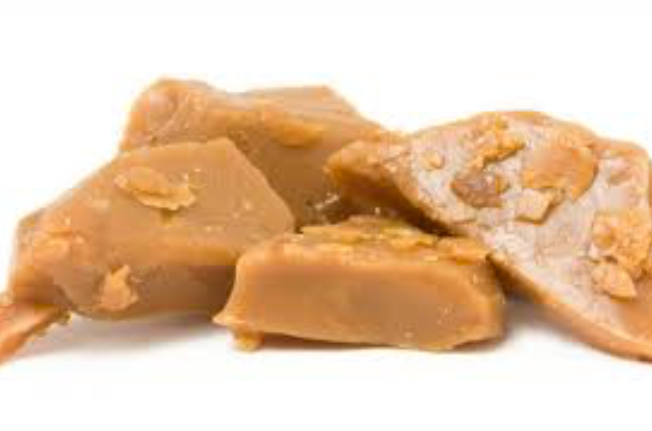Lucky dip and 'A word from', all in one - Eliza Acton and Everton toffee
- rosemarydearman1
- Oct 16, 2018
- 6 min read

"The young women of today .. will bless Miss Acton for her clarity, for her positive attitude and for the memorable comments and instructions which bejewel her pages." Elizabeth David
Not only is the book I picked about a lady who lived between the years of 1799 and 1859, but my lucky dip is also somewhat old-fashioned in itself.
Well it's not really a book about the lady - one Eliza Acton - but rather an edited version of her own book. The book I have is simply called The Best of Eliza Acton and is edited by a lady called Elizabeth Ray with an introduction by the indomitable, Elizabeth David - who can be somewhat old-fashioned and schoolmarmish herself. Elizabeth Ray is even more so - for example - she uses the word receipt rather than recipe in her Preface - now a redundant use of the word receipt.

The Penguin edition - which is mine - was published in 1974, so I must have bought it here in Australia, although it was originally published in 1968. Eliza Acton's own book Modern Cookery for Private Families was published in 1845. It was the only book she published other than a small one on bread cookery. Although rather sadly she first tried her hand at writing poetry, but when she took it to the publisher he told her to write a cookery book instead. She spent her childhood in Suffolk, but lived her adult life in Tonbridge - a spa town in wealthy Sussex, and in Hampstead in London. She never married and lived with her mother until her death. So her cooking was not aimed at the rich or large households but rather at home cooks. However, her work was eclipsed by the more well-known Mrs. Beeton's mammoth tome, although, today most people seem to think that Eliza Acton's book is the better of the two. Indeed in 1918 she ceased to be published until a revival of interest in her work after WW2. Elizabeth David, of course, has a theory as to why she disappeared for a while:
"The English public had become accustomed to cookery books put together by syndicates of editors and recipe compilers rather than, written as the expression of one author's experience and beliefs. In other words, housewives and cooks did not read cookery books, they merely looked up recipes. ... Eliza Acton was not, and has never been, superseded. She was simply, for a generation or two eclipsed. Temporary eclipse has often been the fate of great innovators. In a way it is posterity's compliment to genius."
It's interesting to read these comments, because today, of course, the pendulum has swung completely the other way, so that now we have many very personal cook books, vanity projects indeed (a bit like this blog), not to mention the blog universe of every man and woman and his dog writing their personal thoughts about food. It's a modern obsession. So Eliza Acton is interesting to read in this context. Here are a couple of her comments:
"Many indifferent cooks pique themselves on never doing anything by rule ... the consequence is repeated failure in all they attempt to do ..."
“It may be safely averred that good cookery is the best and truest economy, turning to full account every wholesome article of food, and converting into palatable meals what the ignorant either render uneatable or throw away in disdain.”
"When in very sultry weather cream becomes acid ... it may still be made available for delicate pastry-crust and superlative cakes, biscuits and bread; but if ever so slightly putrid it will be fit only to be thrown away."
My sons would like that one.
“Vegetables when not sufficiently cooked are known to be so exceedingly unwholesome and indigestible, that the custom of serving them ‘crisp’ should be altogether disregarded when health is considered of more importance than fashion.”
which is more or less the opposite to what is recommended these days.
She is also very clear in her instructions and, what I like, is that she gives reasons for doing or not doing particular steps in a recipe. Elizabeth David quotes her on whisking egg whites for sponge cakes:
"The excellence of the whole depends much on the manner in which the eggs are whisked; this should be done as lightly as possible, but it is a mistake to suppose that they cannot be too long beaten, as after they are brought to a state of perfect firmness they are injured by a continuation of the whisking and will at times curdle, and render a cake heavy from this cause." Eliza Acton .... "There you have, in under one hundred words ... the simple explanation of a million leaden sponge cakes - and for that matter of several million failed soufflés." Elizabeth David
So an admirable lady whose work I should perhaps investigate more. Maybe I should cook a meal a month from a book picked at random from my shelf. It would certainly make me more adventurous and make me use my library more.

I assume that this line drawing is from the original book by an anonymous artist. There is no reference to the creator of the illustrations anywhere. Anyway it is on the page that I opened - a section on 'Confectionary', and on this double page spread were three recipes - Caramel (the quickest way), Nougat and Everton Toffee. I decided to concentrate on the Everton toffee because the very words brought back memories of making this in my childhood kitchen in Hornchurch. It's more like a hard fudge than a toffee really and definitely not good for you, but yummy - it's just sugar and butter. As the editor Elizabeth Ray says at the end of the recipe: "This must still be the first introduction to 'cooking' for many children." I suspect this is no longer true - at least here in Australia. I have never heard it spoken of. But over there in England it is distributed by little girls at every Everton football match.

The nickname of the Everton footballers is the Toffees. Everton being the 'other' Liverpool football team. And yes, Everton lays claim to being the home of Everton toffee. It was invented by one Molly Bushell in 1753, - long before Eliza Acton. Once she had mastered the recipe she produced it commercially in her little factory in what was then the village of Everton and sold it in the shop there.
The business was later sold but there is still an Everton Toffee Company.
This is what the toffee looks like:

And this is Eliza Acton's recipe
EVERTON TOFFEE
No. 1 - Put into a brass skillet or small preserving-pan three ounces of very fresh butter, and as soon as it is just melted add a pound of brown sugar of moderate quality; keep these stirred gently over a very clear fire for about fifteen minutes, or until a little of the mixture, dropped into a basin of cold water, breaks clean between the teeth without sticking to them; when it is boiled to this point, it must be poured out immediately, or it will burn. The grated rind of a lemon, added when the toffee is half done, improves it much; or a small teaspoonful of powdered ginger moistened with a little of the other ingredients as soon as the sugar is dissolved and then stirred to the whole, will vary it pleasantly to many tastes. The real Everton toffee is made with a much larger proportion of butter, but it is the less wholesome on that very account. If dropped upon dishes first rubbed with a buttered paper, the toffee when cold can be raised from them easily.
Butter, 3 oz; sugar, 1 lb; 15-18 minutes. Or, sugar, 1 lb,; butter 5 oz; almonds, 2 oz; 10-15 minutes.
No.2 - Boil together a pound of sugar and five ounces of butter for twenty minutes, then stir in two ounces of almonds blanched, divided, and thoroughly dried in a slow oven or before the fire. Let the toffee boil after they are added, till it crackles when dropped into cold water, and snaps between the teeth without sticking.
Sugar, 1 lb; butter, 5 oz; almonds, 2 oz; 20-30 minutes.
All very nostalgic. We don't make toffee at home any more do we? It's all cookies and cupcakes these days.















Comments